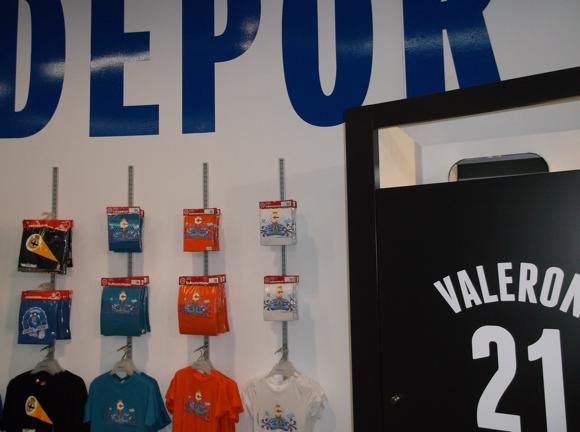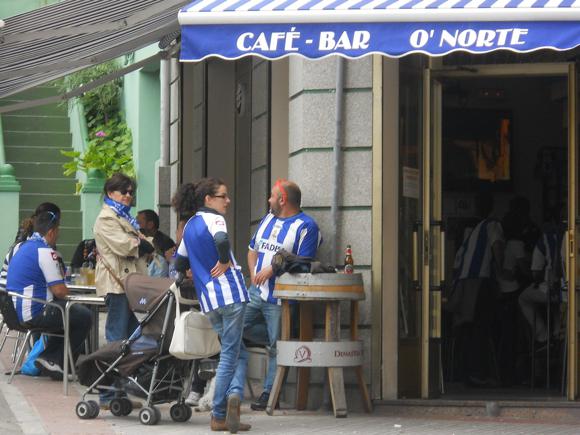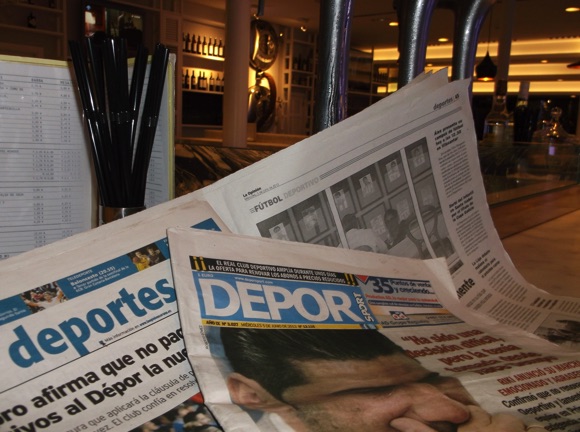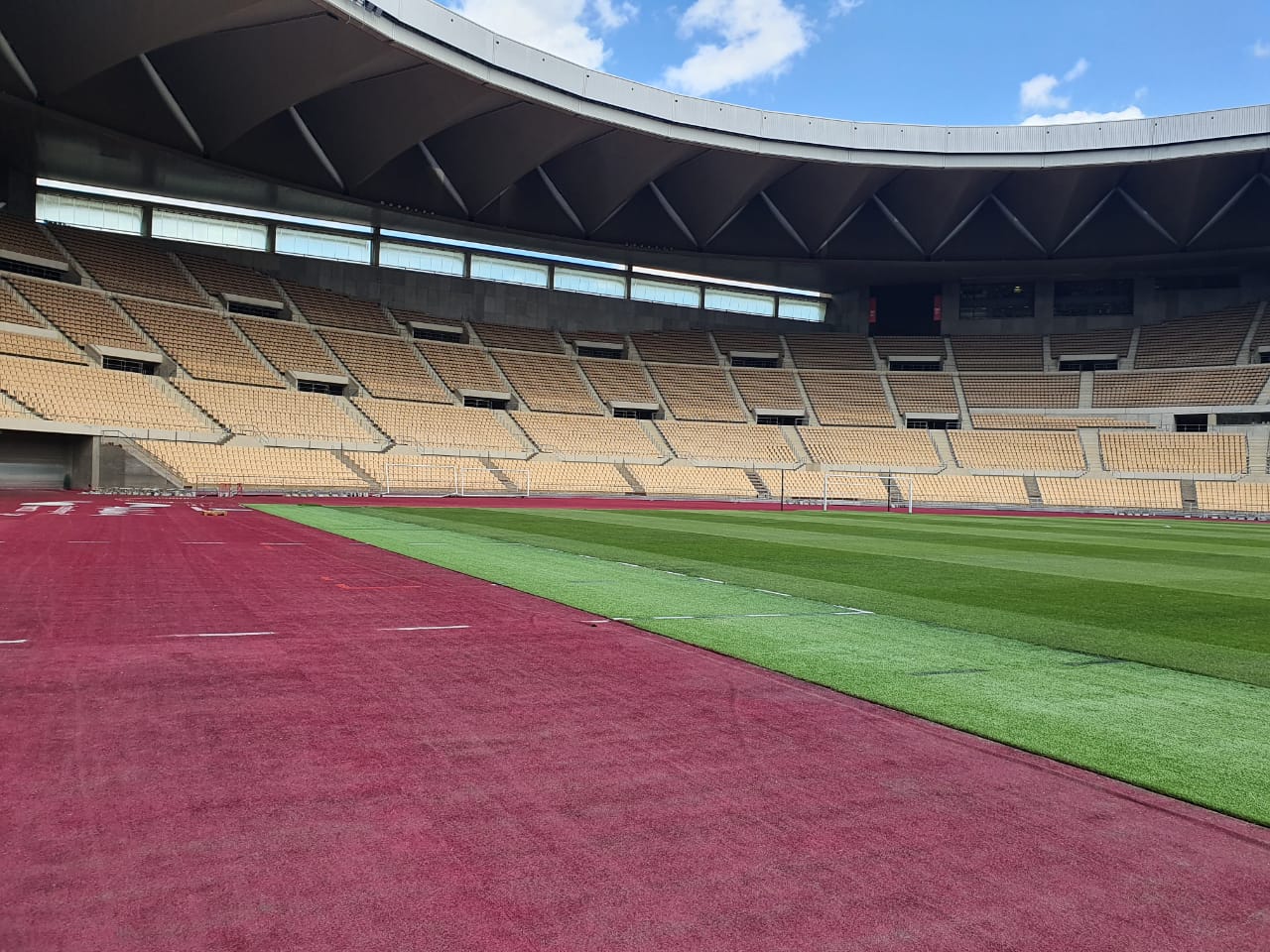A fan’s guide – the club from early doors to today
Title-winners, four-times runners-up, twice cup winners and Champions League semi-finalists all in one decade, Deportivo La Coruña twice sank into the Segunda in recent seasons, coming straight back up both times.
Then the good ship Dépor foundered further, submerging into the newly streamlined third tier – but even then failed to defeat Albacete in the 2021-22 play-off on home turf, La Riazor, overlooking the wild waves of north-west Spain.
Defeat came after a late equaliser and an extra-time winner from the visitors, the Riazor packed and desperate for any modicum of success, no matter how modest. It didn’t come. The last time Dépor spent three consecutive seasons in the third flight was… never.

The Blue and Whites first made the top flight in 1941, having lost out on promotion the year before at the hands of eternal rivals Celta Vigo. The club had been founded in 1906, and had been a member of the Segunda since its inaugural year of 1929.
Dépor’s first golden era started in the 1940s. Building their current home of the Riazor in 1944, the club came close to the Spanish title in 1950. With a team including iconic goalkeeper Juan Acuña and, later, Luis Suárez, both locally born, plus Uruguayan forward Dagoberto Moll, Dépor stayed in the top flight until 1957.
It took three decades before the top scorer that fateful season of 1956-57, Galician-born Arsenio Iglesias, created a side greater than that of 1950.

Promoted in 1991, a team featuring former Barça defender López Rekarte, ex-Atlético man Donato and fellow midfielder Fran overcame a tricky first season to gain a European place in the second. Joined by Brazilian star Bebeto, Dépor then pushed Johan Cruyff’s Barcelona to the wire in 1994.
But it was Bebeto, soon to raise the World Cup, who ducked out of taking a crucial last-minute penalty in the last game against Valencia. Its conversion would have gained Dépor the title. Instead, Serbian defender Miroslav Djukić took the fateful kick, a poor effort that kept the score at 0-0 – and the title in Barcelona.
Runners-up again but cup winners in 1995, Dépor were now Super Dépor, serious regular challengers to Barça and Real. Under Basque coach Javier Irureta, grit was added to guile, with prolific Dutchman Roy Makaay joining long-term regulars Fran, Donato and Mauro Silva.

In 1999-2000, Dépor, Super Dépor, won the title with five points to spare, prompting wild scenes around the Riazor.
Bringing in striker Diego Tristán and Canarian Juán Carlos Valerón, who would push out title-winning lynchpin Djalminha, Dépor achieved four consecutive top-three finishes to become Champions League regulars.
In 2004, an improbable 4-0 win over Milan – to reverse a 4-1 first-leg defeat – set Dépor up for a semi-final with near neighbours Porto. A 0-0 draw over the border put Dépor within 90 minutes of a final appearance. It wasn’t to be. A cynical if effective display by José Mourinho’s side saw the tie decided by a solitary penalty, and the Riazor fall silent. It was the end of an era.

Dépor descended into mediocrity, then into the Segunda. First manager José Luis Oltra pulled them out of it in 2011-12 then, in 2013-14, Fernando Vázquez, a former assistant to Dépor legend Iglesias in the Galician national set-up.
Budgetary restrictions at the cash-strapped club forced Vázquez out pre-season but with their strong fan base, La Coruña battled to stay up – and provided the visiting neutral with a top-flight weekend to remember.
The last rebound came in 2013-14, when long-term captain Manuel Pablo, the last vestige of the Super Dépor team of title-winning vintage, led the Brancoazuis back to La Liga.

The four-season stint in the Primera proved to be a struggle for survival, even under Super Dépor old boy Victor Sánchez. Relegated in 2018, Dépor made the play-offs first time round, nearly 30,000 squeezing into the Riazor to enjoy a 2-0 win over Mallorca. The Galicians soon regretted not making more of a one-man advantage over the visitors in that game when they travelled to Palma three days later, a late goal for the islanders reversing the aggregate to 3-2.
Dépor haven’t come close to the Primera since. In 2020, the worst defence in the Segunda let in one goal too many against Ponferradina, and the head-to-head record with their fellow relegation candidates condemned La Coruña to the third flight.
As fate would have it, 2020-21 was the last season that the much-maligned Segunda B operated in its byzantine format. Even then, Deportivo failed to make the promotional group, staying put with Spain’s malingerers and fallen giants for another season.
With everything going according to the script – a capacity crowd at the Riazor, a 1-0 lead and dominance over play-off visitors Albacete – Deportivo fell to a late equaliser then an extra-time winner. Ironically, the victorious manager, Rubén de la Barrera, is a locally born Dépor fan, whose previous coaching post had been at the Riazor.







Stadium Guide
The field of dreams – and the stands around it






Dépor have always been based at Riazor beach, although a proper stadium wasn’t built here until 1944, over the road from the basic original pitch.
Of sufficient standard that it hosted a Spanish Cup final three years afterwards, the Riazor was a simple open bowl of 30,000-plus capacity.
Completely rebuilt with four new stands for the 1982 World Cup, for which it staged three games, the Riazor was further modernised during the glory years of the 1990s.

The club hasn’t forgotten the past, though, retaining the Marathon tower and giving prominence to a statue of goalkeeper Juan Acuña, both of the Franco era. The World Cup rebuild saw the two facing sideline stands fashioned like an old sailing ship, a shape easily recognisable when you gaze over above the sea of blue-and-white supporters thronging bar-lined Rúa Manuel Murguía in the build-up to kick-off.
Set in two tiers, the stadium comprises the Fondo Pabellón end nearest the sea, and the Fondo Marathon end under the tower, as well as the Tribuna Delantera on Murguía and the Preferencia with VIP seats on Avenida de la Habana.
Away fans are generally few and far between in this far outpost of Galicia, a corner of the Pabellón and the Preferencia, designated as sector 20, the Grada Visitante. Current capacity is 32,500. The stadium will be officially known as the Abanca-Riazor until 2025.
getting there
Going to the stadium – tips and timings



Bus stops line Calle Manuel Murguía by the stadium, serving routes 3A, 4 and 7 from Plaza de España in town, as well as 1 from focal Plaza de María Pita. Journey time is 15-20mins.
There’s no direct service from the train station – the 14 from nearby Sardiñeira runs to Ronda Outeiro, 304, a 8-10min walk up to the roundabout and right down Calle Manuel Murguía.
If you’re in town, it’s a pleasant stroll along the seafront to Riazor, perhaps 20-25mins from the city centre.
getting in
Buying tickets – when, where, how and how much


Tickets are distributed in advance at the main office (Mon-Fri 10am-1.30pm, 4.30-7pm) between gates 15 and 16 on Avenida de la Habana, or on the day at the ticket windows at the Palacio de Deportes facing the sea. There are no online sales for non-members.
Prices are set around €20 in the Fondo Marathon or Pabellón, rising to €40 in the Preferencia and €60-plus in the Tribuna Superior on Manuel Murguía. If ever Dépor return to the Primera, prices will rise around 20% for the visits of Real Madrid, Barça and Celta Vigo.
what to buy
Shirts, kits, merchandise and gifts





The rather chic DeporTienda (Mon-Sat 10.30am-8.30pm & 2hrs before kick-off) near the Acuña statue on Rúa Manuel Murguía stocks a range of equally chic retro clothing. It doubles up as a mini museum, with a trophy cabinet (including the 2000 Spanish title) in a raised area at the entrance.
There are two other DeporTiendas, at Calle Real 59 (Mon-Sat 11am-2pm, 5.30pm-8.30pm) near Teatro Colón and outside town at the Marineda City mall (Mon-Sat 10am-10pm), floor 1, unit 51.
Dépor still have a shirt-sponsor contract with Estrella Galicia beer, the non-alcohol version promoted on the famed blue-and-white stripes and the current tree-green second kit.
Where to Drink
Pre-match beers for fans and casual visitors













Few stadia, not even Valencia’s or Bilbao’s, are surrounded by as many bars as Depor’s. Most line Rúa Manuel Murguía, from the popular Estadio on the seafront corner, past Sieiro with its quality Serrano ham sandwiches and on to Brigantia.
El Rompeolas features an outstanding display of classic Dépor moments in black and white, from Franco-era line-ups to Bebeto’s tears and beyond.
The Taberna Riazor Pulpeira specialises in octopus, as its name suggests, while Blanco y Azul dresses in blue and white. The traditional Stollen is sport-oriented, though that sport is hockey.







On the other side of the ground, on Avenida de la Habana, Chiquitín, near a nicer and bigger corner grill restaurant Gonzaba, is bafflingly popular. Just beyond it, O’Norte (Avenida de Peruleiro 3) also fills up pre-match.
Equally busy, even before they reach the blue-and-white zone around the stadium, supporters fill up at the Cervecería Victoria Coruña shortly before the seafront, where Avenida Calvo Sotelo meets Rúa Alfredo Vicenti.
Finally, on the beach itself, the formerly unsurpassable Playa Club has since been gentrified, flanked by two upscale restaurants, Atlántico 57 and Tiro do Playa. The sea view, though, cannot be gainsaid.

































